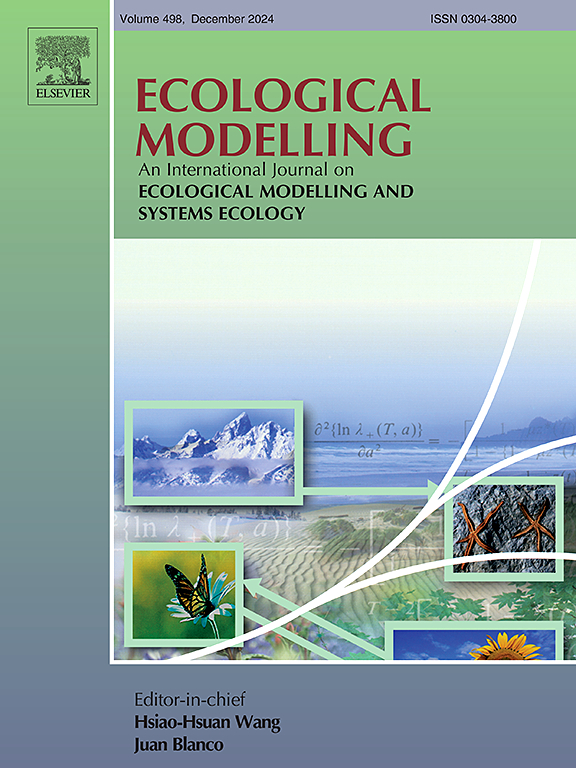A new cellular automata framework of urban growth modeling by incorporating land use policies and economic development zone planning
IF 2.6
3区 环境科学与生态学
Q2 ECOLOGY
引用次数: 0
Abstract
The development of cities is frequently influenced by policies and planning. One of the significant challenges in urban cellular automata (CA) modeling research is accurately quantifying these influences in order to incorporate them reasonably into models. This study proposes a novel urban CA framework that incorporates three key elements: (1) Utilizing the results of dual evaluation of territorial space as the development suitability within the CA model, (2) Integrating the maximum entropy (MaxEnt) model and affinity propagation (AP) clustering algorithm with the CA model, combined with the delineation of economic development zones, to achieve synchronous simulation of multimodal urban growth, (3) Conducting multi-scenario predictions in conjunction with farmland and ecological protection policies to identify the degree of coordination and conflict areas among various policies. The framework assesses the influence of land use policies and economic development zone planning on prospective urban growth. It is capable of simulating enclave-style growth urban growth, thereby extending its utility in practical applications. Taking Wuhan as a case study, we employ the proposed CA framework to forecast the urban spatial pattern in 2035. This can provide a scientific basis for the formulation and improvement of future policies and planning in Wuhan, thereby contributing to informed decision-making and sustainable urban development.
结合土地利用政策和经济开发区规划的城市增长建模新细胞自动机框架
城市的发展经常受到政策和规划的影响。城市蜂窝自动机(CA)建模研究的重大挑战之一是准确量化这些影响因素,以便将其合理地纳入模型。本研究提出了一个新颖的城市细胞自动机框架,其中包含三个关键要素:(1)在 CA 模型中利用地域空间双重评价结果作为发展适宜性;(2)将最大熵(MaxEnt)模型和亲和传播(AP)聚类算法与 CA 模型相结合,结合经济开发区的划分,实现多模式城市增长的同步模拟;(3)结合耕地和生态保护政策进行多情景预测,以确定各种政策之间的协调程度和冲突区域。该框架评估了土地利用政策和经济开发区规划对未来城市增长的影响。它能够模拟飞地式增长的城市增长,从而扩大了其在实际应用中的效用。以武汉市为例,我们运用提出的 CA 框架预测了 2035 年的城市空间格局。这可以为武汉市未来政策和规划的制定和完善提供科学依据,从而为明智决策和城市可持续发展做出贡献。
本文章由计算机程序翻译,如有差异,请以英文原文为准。
求助全文
约1分钟内获得全文
求助全文
来源期刊

Ecological Modelling
环境科学-生态学
CiteScore
5.60
自引率
6.50%
发文量
259
审稿时长
69 days
期刊介绍:
The journal is concerned with the use of mathematical models and systems analysis for the description of ecological processes and for the sustainable management of resources. Human activity and well-being are dependent on and integrated with the functioning of ecosystems and the services they provide. We aim to understand these basic ecosystem functions using mathematical and conceptual modelling, systems analysis, thermodynamics, computer simulations, and ecological theory. This leads to a preference for process-based models embedded in theory with explicit causative agents as opposed to strictly statistical or correlative descriptions. These modelling methods can be applied to a wide spectrum of issues ranging from basic ecology to human ecology to socio-ecological systems. The journal welcomes research articles, short communications, review articles, letters to the editor, book reviews, and other communications. The journal also supports the activities of the [International Society of Ecological Modelling (ISEM)](http://www.isemna.org/).
 求助内容:
求助内容: 应助结果提醒方式:
应助结果提醒方式:


